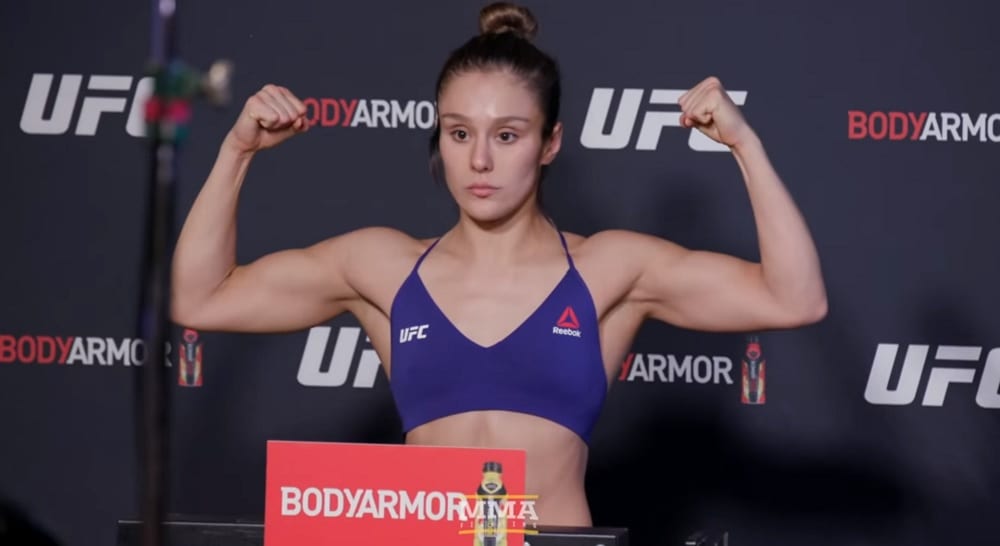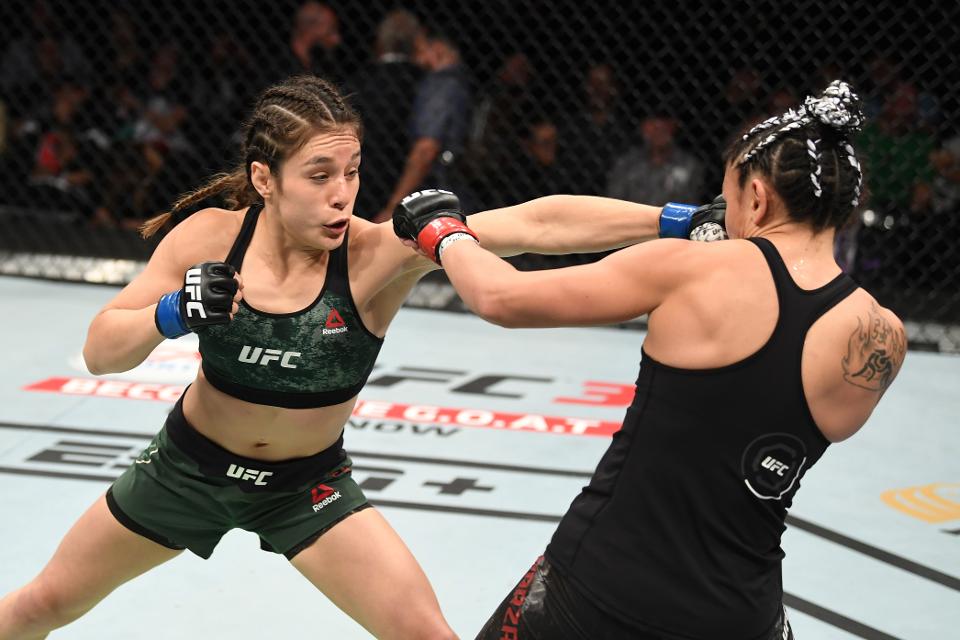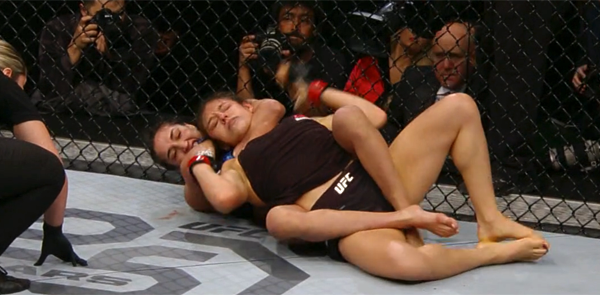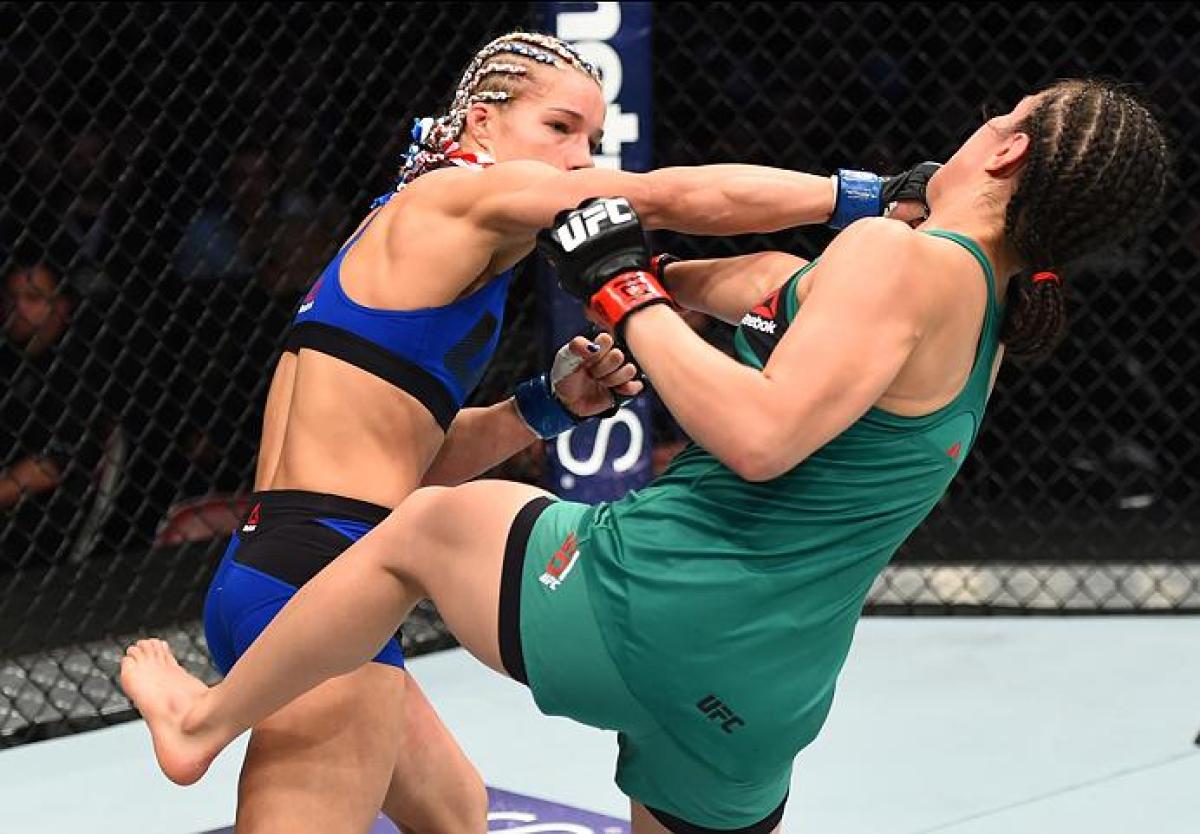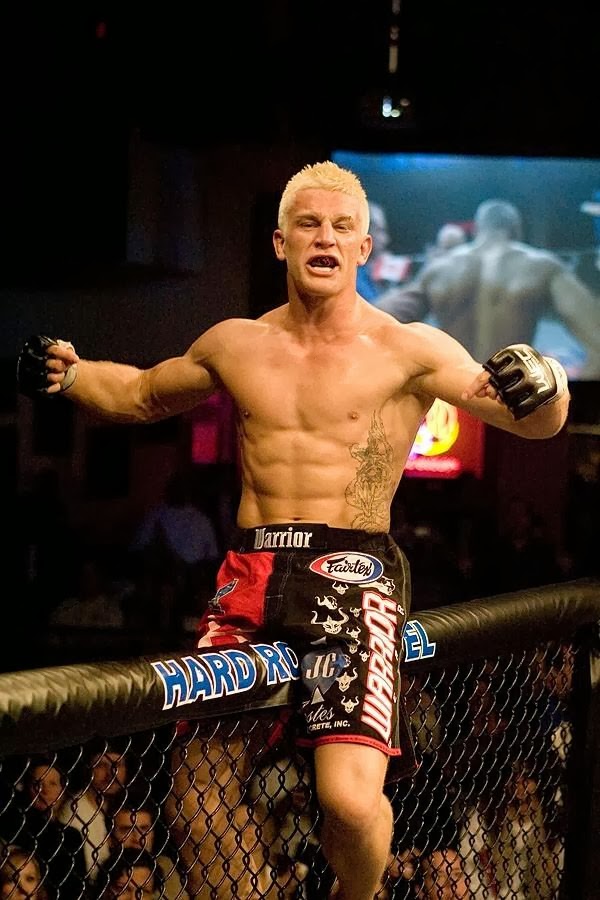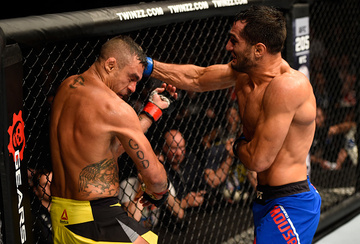Alexa Grasso failed to make the strawweight limit on the eve of UFC 246, on the cusp of a career-building fight against Claudia Gadelha, squandering an opportunity to realize the acclaim, legitimacy, and fame that comes from a big win on a big card over a big time opponent. So now Grasso finds herself back where she started, trying to establish herself as a legitimate ranked potential title challenger. Today I am here to discuss Alexa Grasso as a fighter, but more importantly, I am here to discuss the potential advantages and challenges Grasso will face as she moves up to a new weight class, with bigger, stronger, and more durable opposition.
Advantages:
Alexa Grasso hasn’t reached her prime as a fighter. At only 26, she has gotten an invaluable amount of experience facing world class opposition of varying degrees, learning to fight against opponents who have the skill and seasoning to exploit things she hasn’t learned, or has learned but hasn’t refined. Unlike the majority of young fighters, who build their careers against opponents who lack their athleticism, skill, or experience, Grasso has been able to fight opponents who have forced her to acknowledge and address technical, mental, and strategic deficiencies in her game.
The second biggest advantage Grasso has is that she hasn’t had to absorb a tremendous amount of punishment in fights, despite facing much more experienced and established opposition. Grasso hasn’t been in firefights where she has had to risk being stopped or punished, even though she has a strike-heavy style that more times than not results in fighters a) leaving the best of themselves in the gym, and b) leaving whatever they have left in the cage after one war too many. (If you think I’m wrong, look at “The Korean Superboy” Doo ho Choi and the ridiculous decline of one Anthony “Showtime” Pettis.)
The next advantage is athleticism — Grasso isn’t going to be a big flyweight, which means she will have a natural advantage in quickness and mobility. When you combine that with the fact that even at a lower weight she was still considered to be one of the better athletes in regards to hand speed, explosiveness, foot speed, and agility, you can expect her to show similar success against women in the division who are in many cases older and not particularly dominant athletes. Roxanne Modafferi, JJ Aldrich, Rachael Ostovich, Joanne Calderwood, Kaitlyn Chookagian, Jessica Eye, Gillian Robertson, Alexis Davis, Lauren Murphy, and Andrea Lee are all fighters ranked in this division, and none of them are on par with Grasso in regards to current athleticism or potential athleticism. Many have already peaked, even more are already in decline.
Even in the new division, Grasso is probably one of the better technical strikers, and having been one of the better athletes in her previous division makes her one of the better attribute-based strikers in this one. The large majority of the women at flyweight are at best competent strikers who lean heavily on their ability to grapple and wrestle in lieu of a refined offensive, defensive, or counter-based striking game. With the exception of Valentina Shevchenko and possibly title challenger Chookagian, there isn’t really another fighter at 125 pounds who has consistently shown the functionality or versatility on the feet shown by Grasso.
Disadvantages:
Grasso is a good but not great grappler; the large majority of her success comes from a combination of functional takedown defense, high-paced scrambles, and athleticism. At strawweight, the athletic advantage wasn’t nearly as pronounced, which exposed the limitations of her wrestling/grappling, but at flyweight she will have a huge advantage athletically, but she won’t be able to ward off consistent and concerted attempts that force her to grapple with much bigger, stronger, and more durable opposition.
Additionally, Grasso has shown herself to be a fast and sharp puncher, but what she has not shown is convincing punching power. At strawweight when she got off, she got off a lot, but she wasn’t able to put a dent in the majority of fighters she hit, even when she landed with velocity and/or volume. That will most likely only get worse in her new weight class — if she wasn’t able to scare off or stop strawweights, there is a good chance she won’t be able to do it to flyweights. This means she will have to place an extra emphasis on footwork, punch placement, body work, and defense, because exchanges that shaded ever so slightly in her favor at strawweight are exchanges that will get her beat the fuck up at flyweight. That also makes avoiding grappling exchanges — and forcing scrambles in these exchanges — a heck of a lot harder. You saw what a non-athlete like Modafferi did to a big, strong, physical athlete in Maycee Barber; imagine how that would looks against Grasso.
While Grasso is a sharp, smart, and athletic fighter, she isn’t terribly physical and has routinely been backed up and bullied by fighters her own size. There is a very good chance that similar things will happen at her new weight class. At a lighter weight, the lack of physicality isn’t as damning, because most fighters aren’t large enough to drain energy reserves through extended engagements, nor do they have the cardio to really play up those physical advantages. Either way, Grasso wasn’t really punished for her lack of physicality in terms of physical damage absorbed or being controlled on the way to one-sided losses. At flyweight, that likely changes.
On top of everything else, Grasso has a fundamental flaw that has held her back against every opponent she has faced whether in a win or a loss, one her team either hasn’t recognized or has, and hasn’t figured out how to resolve it: Grasso has repeatedly fought at her opponent’s pace. Win or lose, Grasso has never taken control of the pacing of her fights. In some cases, the limitations of her opponents kept her from being fully exploited, as was the case when she faced Heather Jo Clark, Randa Markos, and Karolina Kowalkiewicz. In others, her inability to speed up fights (against Felice Herrig and Carla Esparza) or slow down fights (against Tatiana Suarez) resulted in one-sided losses that made her look outclassed and underdeveloped.
I still believe that great things are ahead for Alexa Grasso at flyweight. I only hope her team treads carefully; in a division filled with fighters with a lot more experience and size, the price paid for every win and loss rises. Grasso can ill-afford to let the UFC fast-track her — no, it’s much safer and much smarter to take the long way, where she can find and refine her identity and her skillset. That way, Grasso can achieve continued success in the UFC, rather than the flashes of brilliance that have become connected to her and her career thus far.
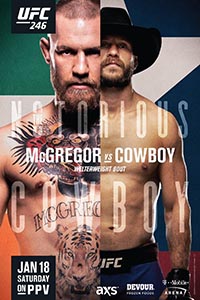 UFC 246: McGregor vs. Cowboy took place January 18, 2020 at T-Mobile Arena in Las Vegas, Nevada.
|

